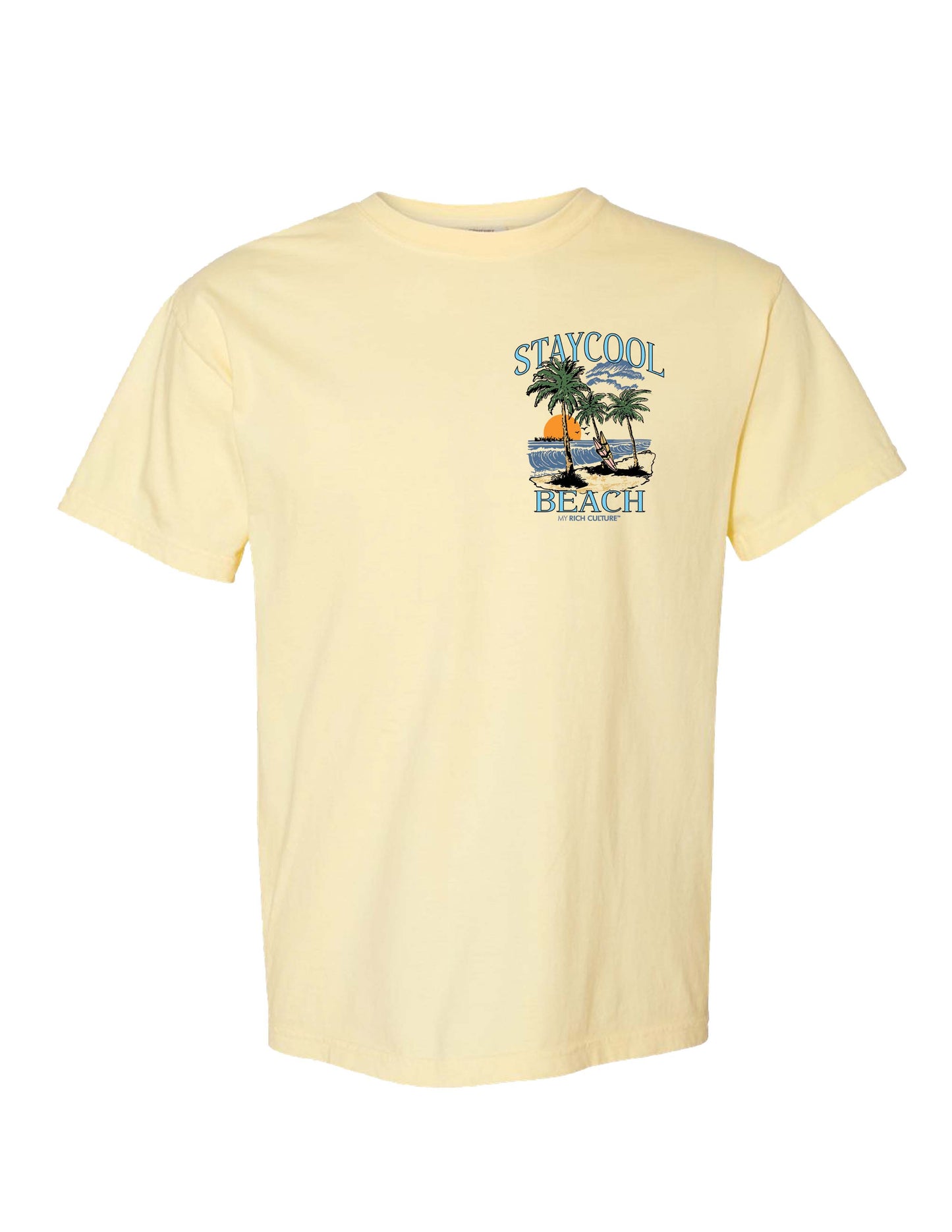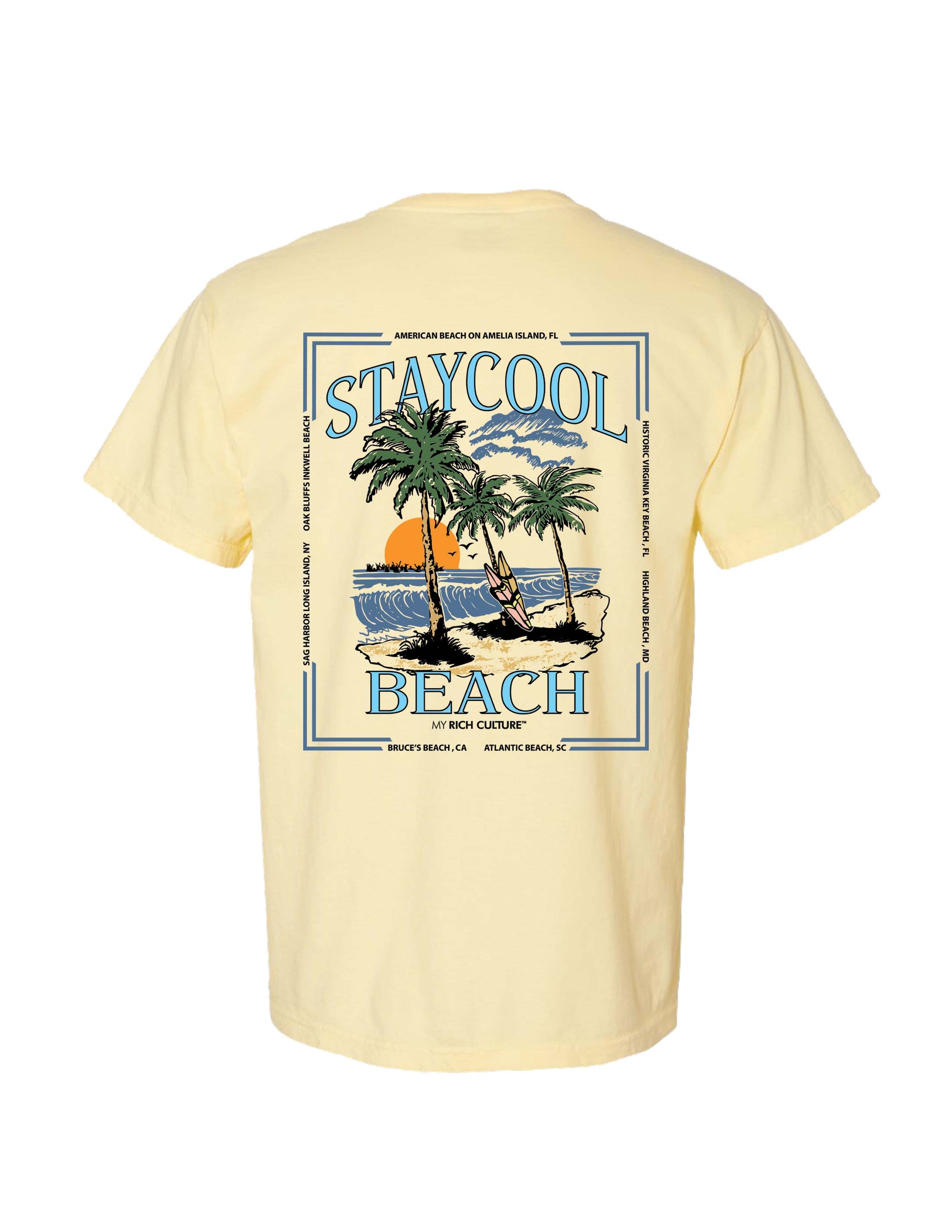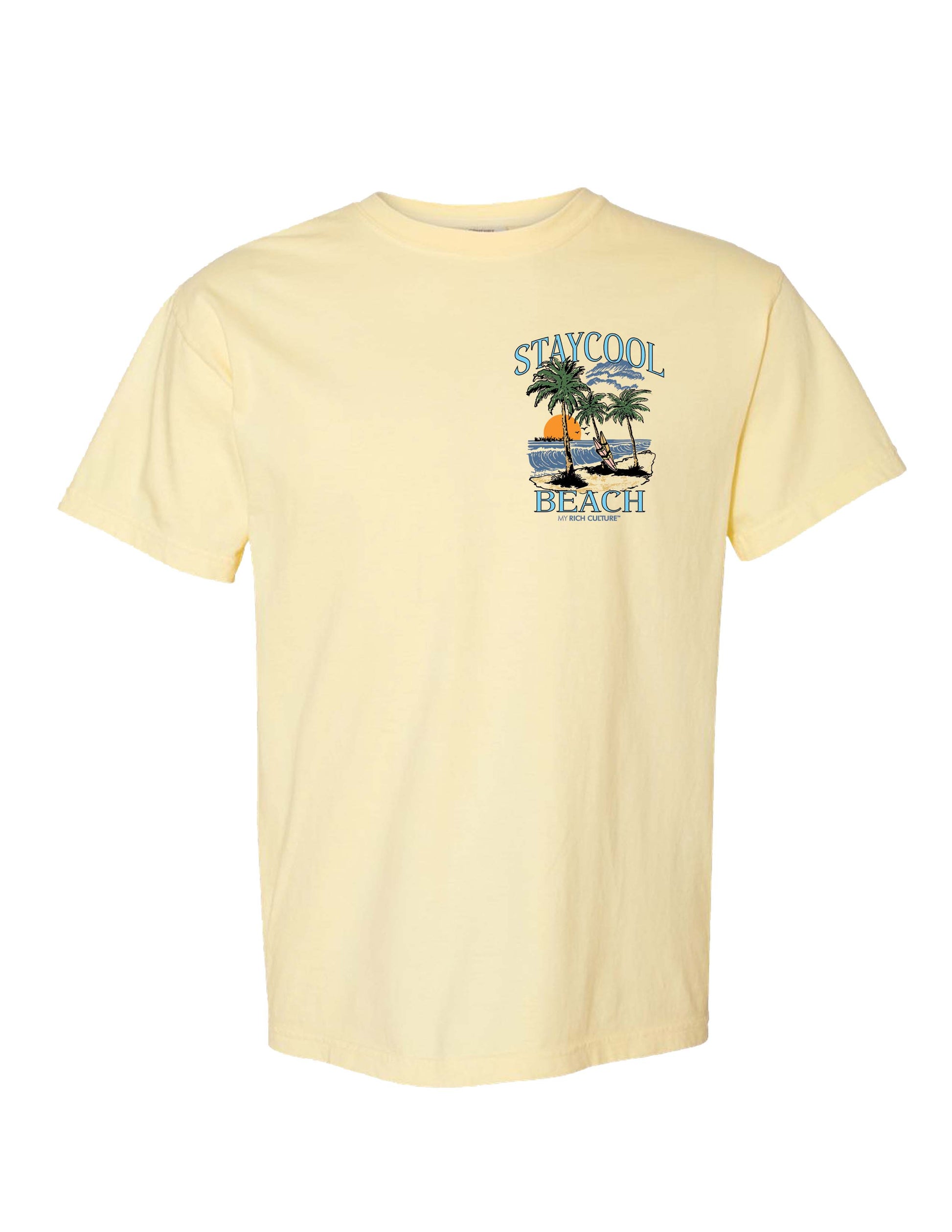My Rich Culture
Black Beaches
Black Beaches
Couldn't load pickup availability
Celebrate resilience with this striking t-shirt that pays tribute to the struggles black communities endured when beaches were off-limits during segregation. Now, we embrace these shores freely, swimming, playing, and cherishing the lands meant for everyone. These beaches are not just places to enjoy but powerful symbols of history and pride.
Material Specs:
- 6.1 oz
- 100% USA cotton
- Garment-dyed
- Relaxed fit
- Unisex
- True to size
History and Design Inspo:
-
American Beach, located on Amelia Island in Florida, holds significant Black history as a haven for black Americans during racial segregation. It was founded in 1935 by Abraham Lincoln Lewis, Florida's first black millionaire, to provide a place for black Americans to relax and vacation without facing racial discrimination.
Atlantic Beach, South Carolina, known as the "Black Pearl," holds a rich history as a Black American community founded in the 1930s as a seaside resort for Black travelers during the Jim Crow era. Established by Black entrepreneurs, it became a thriving hub of culture and empowerment with Black-owned businesses, hotels, and nightclubs. While economic shifts have challenged the town, its legacy is preserved through events and efforts to celebrate its heritage.
Bruce's Beach, a Black-owned resort in Manhattan Beach, California, holds a significant place in American Black history. Established by Willa and Charles Bruce in 1912. Charles and Willa Bruce purchased land and built Bruce's Beach, creating a resort specifically for Black Angelenos who faced discrimination and exclusion at most public beaches. The resort included a lodge, cafe, and dance hall, offering a place for Black families to enjoy the ocean and relax.
Despite its popularity, the resort and its patrons faced harassment and threats from white residents, including the Ku Klux Klan. In 1924, the city of Manhattan Beach used eminent domain to take the property, falsely claiming it was needed for a public park. After a prolonged effort by Bruce family descendants, the land was returned to them in 2021, and the Bruce's heirs sold it back to the county for $20 million.
Highland Beach was incorporated in 1922, it became the first African American municipality in Maryland. It is also believed to be the first African American summer resort in the United States. There are approximately 80 homes, many of them still owned and occupied by descendants of the original settlers. The residents are proud and protective of their town's heritage, established by proud and successful people determined to overcome the prejudices of their post-Reconstruction times. Highland Beach is the home of Twin Oaks, which now serves as the Frederick Douglass Museum and Cultural Center, Inc.
Historic Virginia Key Beach Park in Miami, Florida, holds significant historical importance, within the context of Black history and the civil rights movement. In 1945, after a protest at the whites-only Haulover Beach, Miami's Black community was granted the right to use Virginia Key Beach. This beach became the only public beach for Black residents during the Jim Crow era in Miami.
The City of Miami closed the park in 1982 due to high maintenance costs. However, a group of concerned citizens established the Virginia Key Beach Park Civil Rights Task Force to prevent its private development and preserve it as a park. The park was later restored and reopened to the public in 2008. It is now part of the Virginia Key Beach Park Trust and serves as a reminder of the struggles and victories of the civil rights movement in South Florida. Mary Athalie Range, a civil rights activist and the first African-American on the Miami City Commission, played a key role in preserving the park and ensuring its future as a public space.
Inkwell Beach in Oak Bluffs, Martha's Vineyard, holds a remarkable place in Black American history as a safe haven and gathering place for Black visitors and residents. White residents reportedly called it "The Inkwell" to describe the dark-skinned beachgoers. Like most of the derogatory names white Americans call Black people in America, the nickname has been reclaimed and transformed into a symbol of pride by the Black community. Oak Bluffs became a popular Black resort, attracting visitors from across the country, and Inkwell Beach became a central hub for social gatherings and community building.
In the late 1940s, Black visitors started a tradition called the Inkwell Polar Bears, a daily swim circle that continues to this day, fostering fellowship and connection. The beach is now a recognized symbol of Black history and culture on Martha's Vineyard, representing the island's role as a summer sanctuary for Black Americans.
Sag Harbor on Long Island, has a notable history as a historically Black summer community, particularly Azurest, Ninevah, and Sag Harbor Hills. Those places flourished, attracting Black professionals, entrepreneurs, and other members of the Black elite. These areas became havens for Black American families seeking respite from racism and limited access to other beach resorts, especially after World War II. Eastville, a community established by Black Americans in Sag Harbor, dates back to the 1830s and 1840s. St. David A.M.E. Zion Church was built in 1840. It's a significant landmark in Eastville and served as a center for the community. It is believed to have been a stop on the Underground Railroad.
Share




